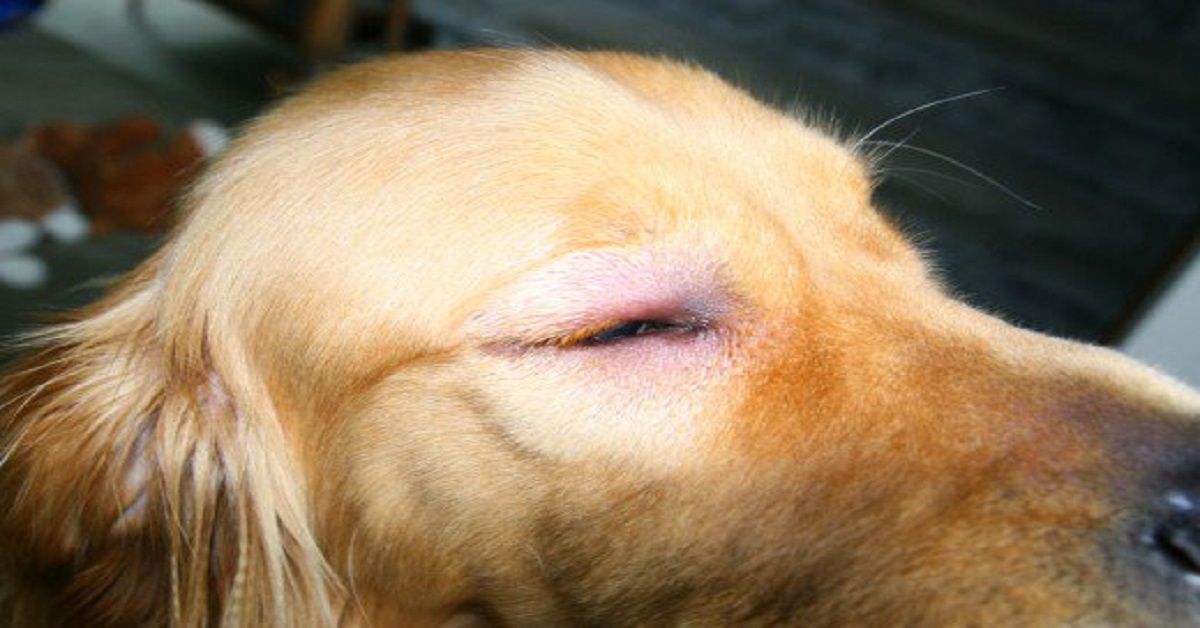Hair Loss Around Dogs Eye - Hair loss around a dog's eye can be alarming for pet owners. Not only does it affect the appearance of the dog, but it can also be a symptom of an underlying health issue. In this post, we'll explore the different causes of hair loss around a dog's eye and provide solutions and tips to prevent and treat it.
Causes of Hair Loss Around a Dog's Eye
Allergies
Allergies are a common cause of hair loss around a dog's eye. Dogs can be allergic to a wide range of things, including food, pollen, dust, and certain materials. When a dog is exposed to an allergen, their immune system overreacts, causing inflammation and irritation. This can lead to hair loss around their eyes as they scratch and rub their face to try and relieve the discomfort.
Mites and Parasites
Mites and parasites can also cause hair loss around a dog's eye. The most common culprit is the demodex mite, which is a type of skin mite that lives in the hair follicles of dogs. When these mites multiply, they can cause a condition called demodectic mange, which leads to hair loss around the eyes and other parts of the body. Other parasites, such as fleas and ticks, can also cause irritation and itching, leading to hair loss.

Infections
Infections can also be a cause of hair loss around a dog's eye. Bacterial, fungal, and viral infections can all lead to skin irritation and hair loss. Dogs with ear infections are particularly prone to hair loss around the eyes, as they may scratch at their ears and rub their face to try and relieve the discomfort.

Hormonal Imbalances
Hormonal imbalances can also cause hair loss around a dog's eye. Hypothyroidism, for example, can cause hair loss and skin problems in dogs. Cushing's disease, which is caused by an overproduction of cortisol, can also lead to hair loss and skin irritation.

Preventing and Treating Hair Loss Around a Dog's Eye
If your dog is experiencing hair loss around their eyes, it's important to identify the underlying cause and address it as soon as possible. Here are some tips to prevent and treat hair loss around a dog's eye:
Visit Your Veterinarian
The first step in treating hair loss around a dog's eye is to visit your veterinarian. They can perform a physical exam and run any necessary tests to determine the underlying cause. Once the cause has been identified, they can recommend the appropriate treatment.
Manage Allergies
If your dog's hair loss is caused by allergies, managing those allergies is key. Your veterinarian may recommend an antihistamine or other medication to control the allergic reaction. You may also need to make changes to your dog's diet or environment to reduce their exposure to allergens.
Treat Infections
If your dog has a bacterial or fungal infection, your veterinarian may prescribe antibiotics or antifungal medication. It's important to follow their instructions for administering the medication and complete the full course of treatment.
Manage Mites and Parasites
If your dog has demodex mites or other parasites, your veterinarian may recommend a medicated shampoo or other topical treatment. They may also recommend flea and tick prevention medication to prevent future infestations.
Manage Hormonal Imbalances
If your dog's hair loss is caused by a hormonal imbalance, your veterinarian may recommend medication or other treatment to regulate their hormones. It's important to follow their instructions and monitor your dog's response to the treatment.
Avoid Irritants
Avoiding irritants can help prevent hair loss around a dog's eye. This includes harsh chemicals, such as those found in certain soaps or cleaning products, as well as other potential irritants, such as certain fabrics or materials.
Keep Your Dog's Face Clean
Cleaning your dog's face regularly can help prevent hair loss and other skin problems. Use a gentle cleanser and warm water to clean their face, being careful not to get any soap or water in their eyes or ears.
Provide Mental Stimulation
Dogs that are bored or anxious may be more prone to scratching and rubbing their face, which can lead to hair loss. Providing mental stimulation, such as toys and puzzles, can help keep your dog entertained and reduce stress and boredom.
Keep Your Dog's Nails Trimmed
Long nails can cause discomfort and increase the risk of injury when your dog scratches their face. Keep your dog's nails trimmed to a comfortable length to prevent this.
Use Protective Gear
If your dog's hair loss is caused by irritants or other environmental factors, consider using protective gear, such as goggles or a face mask, to reduce their exposure.
Hair loss around a dog's eye can be a symptom of a variety of health issues. By identifying the underlying cause and taking steps to prevent and treat it, you can help keep your dog healthy and happy.
View more articles about Hair Loss Around Dogs Eye